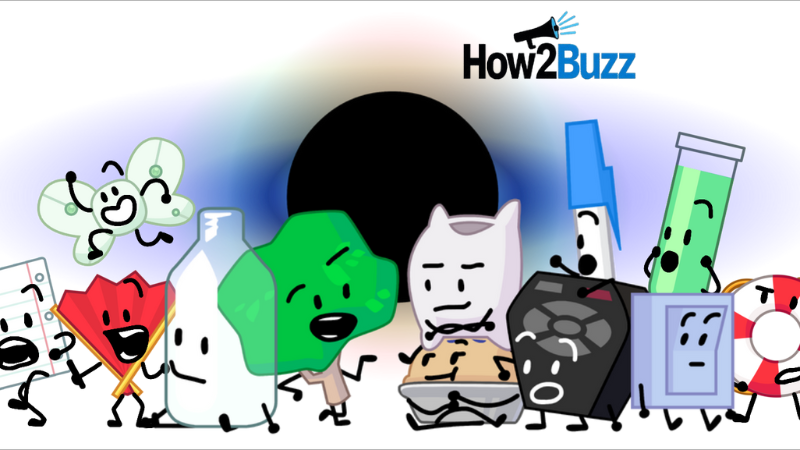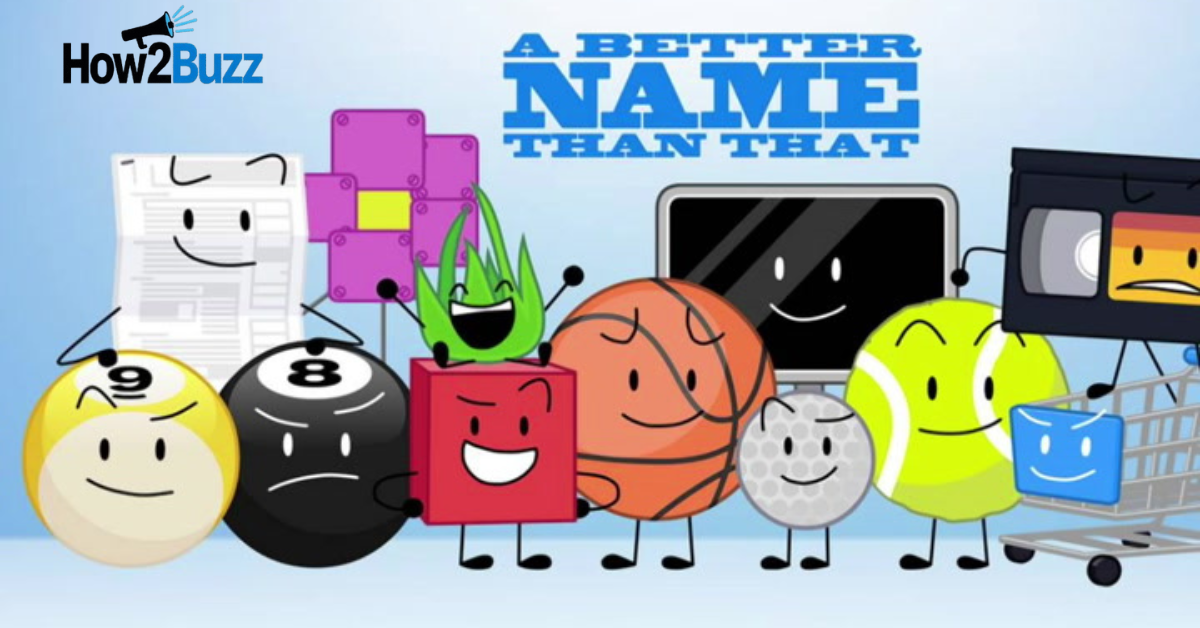There’s something oddly charming about a bunch of talking objects battling it out for a grand prize. That’s the magic of Battle for B.F.D.I.—a fan-favorite animated web series with a quirky edge. But at the core of its wild energy, character arcs, and drama are the bfb teams that define the heart of the show.
Whether you’re just now discovering the series or you’ve been around since the early days, the structure of these teams shapes nearly every twist, elimination, and unexpected alliance. They’re more than just groupings—they’re mini-universes with personalities, rivalries, and storylines that reflect more than just childlike humor.
In this article, we’re taking a deep dive into what makes these teams so compelling, how they evolve, and why fans stay hooked, season after season.
BFB Teams and Their Unique Role in the Series
The concept of bfb teams isn’t just a plot device—it’s a way to explore complex dynamics using simple, stylized characters. Each team in the show is made up of animated objects with human-like personalities. Despite their appearances—whether it’s a literal donut or a leafy branch—they reflect surprisingly realistic emotions and behaviors.
What’s especially clever is how these groups form. Sometimes they’re random, sometimes strategically built, and other times created by popular vote. But regardless of how they come together, each one develops its own personality. From high-functioning teams that work like clockwork to chaotic groups barely holding it together, the diversity is part of the show’s charm.
Viewers don’t just watch for the challenges—they tune in to see how these distinct teams survive or crumble under pressure. It’s storytelling through strategy, humor, and character chemistry.
Why BFB Teams Are Central to the Show’s Popularity
There’s no denying that the emotional core of BFB lies in its relationships. And most of those relationships are formed and tested within these teams. Unlike traditional cartoons where main characters dominate the spotlight, Battle for B.F.D.I. gives nearly every character their moment by placing them in dynamic team settings.
This approach allows the audience to connect with even the most minor characters. A soft-spoken background object might suddenly take center stage due to a conflict or act of bravery within the team. It’s this unpredictability and emotional payoff that keeps fans engaged.
Additionally, the team format makes the show interactive. Viewers often vote for who stays and who goes, and that makes team performance even more crucial. A great moment between teammates can save a character from elimination, while a major slip-up can lead to sudden exits—sometimes shocking, sometimes hilarious.
The Evolution of Teams Over Time
In the BFB universe, nothing is static for long. Teams evolve constantly—due to eliminations, new alliances, or complete reboots of the competition. That evolution keeps things fresh and unpredictable. It forces characters to adapt, form new relationships, or navigate shifting social dynamics.
Early in the series, teams were more stable, often reflecting early character bonds. But as the show progressed, creators began shaking things up. Entire team rosters would change in a single episode. New characters would join, and others would leave abruptly.
These changes might sound chaotic, but they’re handled in ways that further character development. For example, a once-overlooked teammate might shine in a new setting. Or someone who was once the team glue might struggle when thrown into a different group. It all adds depth, both to the characters and the competition as a whole.
Fan-Favorite Teams That Shaped the Series
Among the many teams in the BFB universe, a few stand out as unforgettable. Not because they always won—but because they left a mark through memorable moments and dynamic storytelling.
One such group is “Team Ice Cube.” Their loyalty and inside jokes made them a fan favorite, even when they weren’t performing the best. The way they stuck together created a sense of unity that viewers respected and rooted for.
Then there’s “Free Food.” Constantly teetering on the edge of disaster, this team became iconic for its internal arguments and comical failures. But behind the chaos was a group of deeply unique characters who always found a way to bounce back—sometimes literally.
And who could forget “A Better Name Than That”? With its mix of strong characters and clever humor, this team managed to strike a balance between effectiveness and entertainment. Their moments of brilliance, mixed with heartfelt drama, helped define several key episodes.
The Psychology Behind Team Dynamics
At first glance, BFB might seem like silly fun—and it is—but there’s also an unexpected layer of psychological depth in how these teams operate. Viewers can easily see themselves or people they know in these group dynamics.
Each team contains a mix of personalities: the leader, the silent thinker, the comic relief, and the wildcard. These archetypes mirror real-life team structures in school, work, or social settings. Watching how the animated characters resolve conflict or handle pressure offers a surprising level of relatability.
This is what makes the show more than just a source of laughs. It encourages empathy and reflection. You might laugh at a character’s outburst, but also understand where it’s coming from. That emotional duality is rare in animated web series and makes BFB truly special.
How the Team Format Keeps the Show Fresh

Long-running animated series often struggle to stay interesting. But the rotating team structure in BFB keeps everything exciting. When a team wins or loses, the impact ripples throughout the entire cast. New dynamics emerge. Old conflicts resurface. Shifting alliances shake up the power balance.
Sometimes teams are forced to absorb eliminated characters from other groups, resulting in sudden changes in leadership or strategy. Other times, full team breakdowns lead to random new combinations that no one saw coming.
This method not only keeps the show from feeling repetitive—it creates endless possibilities for storytelling. It’s like every episode has the potential to be a soft reboot, while still keeping long-term fans invested in ongoing arcs.
Community Involvement: Fans and Their Favorite Teams
The bfb teams are more than just on-screen characters—they’re the backbone of a massive fanbase. Online communities actively follow each team’s progress, create fan art, write spin-off stories, and share predictions on future episodes.
Platforms like Reddit, Discord, and YouTube are full of discussions dissecting team strategies and debating who should have stayed or been voted off. This interaction adds a layer of depth that keeps viewers engaged even between episodes.
It’s not uncommon for fans to “adopt” a team as their favorite, defending its members with the same intensity you’d see from sports fans. That level of passion is only possible when viewers feel a real connection with the characters and their journeys.
Beyond the Screen: BFB Teams as Learning Tools
Interestingly, the team-based format has also turned BFB into an educational tool in unexpected ways. Teachers and parents have used it to discuss teamwork, fairness, and problem-solving with kids.
Because the show presents group dynamics in exaggerated but understandable ways, it becomes a fun entry point for talking about real-life issues like conflict resolution or supporting teammates. It’s learning through entertainment, and it works incredibly well because it’s relatable and engaging.
Even adults have found value in these scenarios, using them as metaphors for office teams or creative collaborations. It goes to show that good storytelling resonates beyond its intended audience.
Conclusion
In the grand universe of Battle for B.F.D.I., the bfb teams are more than just animated object groups. They are the engine that powers the narrative, the characters that we cheer (or jeer) for, and the ever-changing social landscape that keeps us hooked.
FAQs About BFB Teams
What is the concept behind BFB teams?
The idea is to group characters into teams that compete in various challenges. Each team reflects different personalities and interactions, creating space for both comedy and emotional depth.
How many teams have existed in the BFB series?
While the exact number changes due to constant reshuffling, there have been over a dozen unique team formations throughout the show’s run.
Can team members be eliminated individually?
Yes. Even if a team performs well overall, individual votes can lead to a member being eliminated, adding a layer of strategy and suspense.
Why do team names matter?
Team names often reflect the humor of the show. They can be random, ironic, or completely nonsensical—but they contribute to the identity and vibe of the team.
Do teams ever merge or split?
Absolutely. As the series evolves, teams are often restructured, especially when eliminations reduce the cast size. This keeps the game interesting and fresh.



